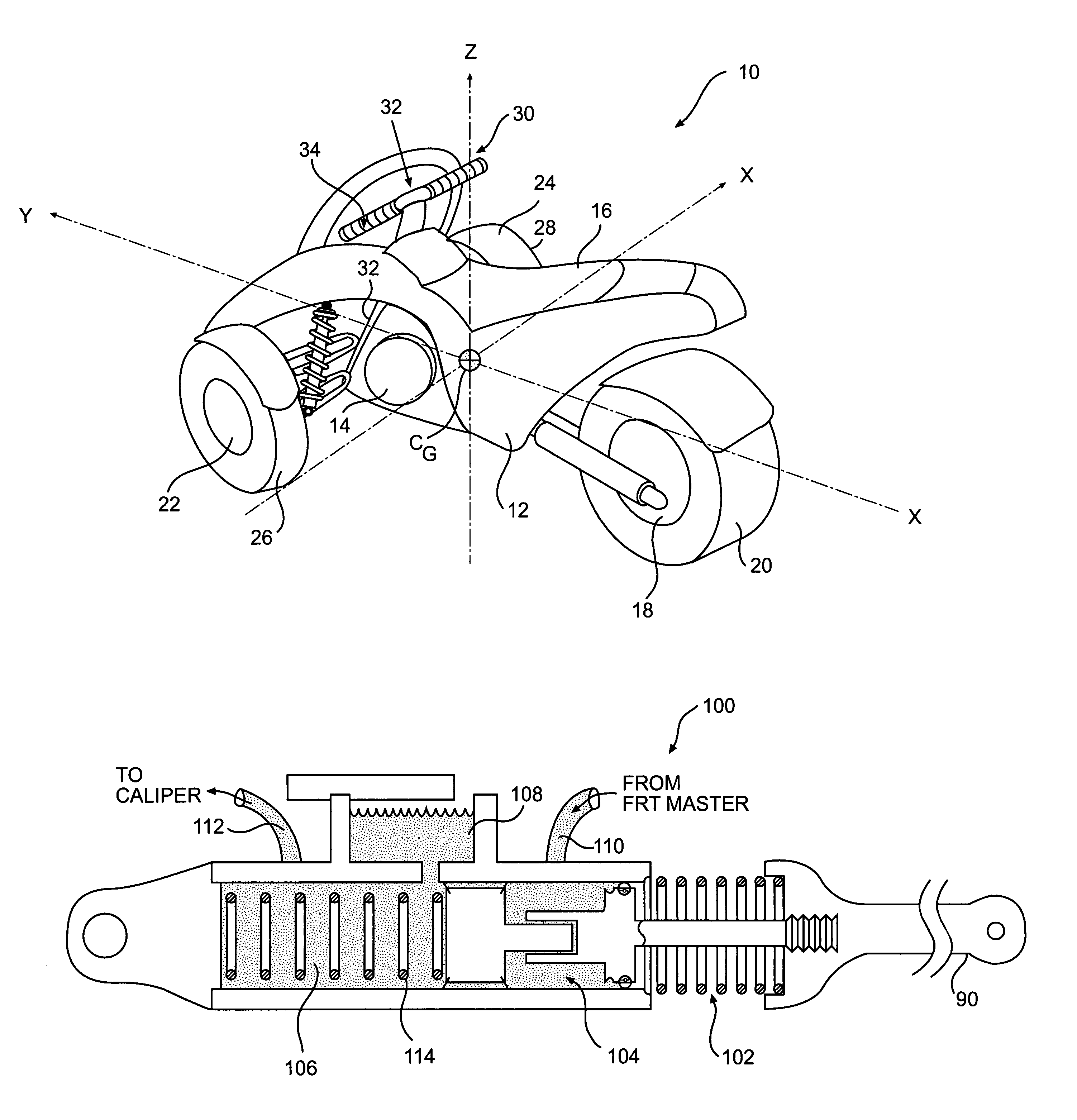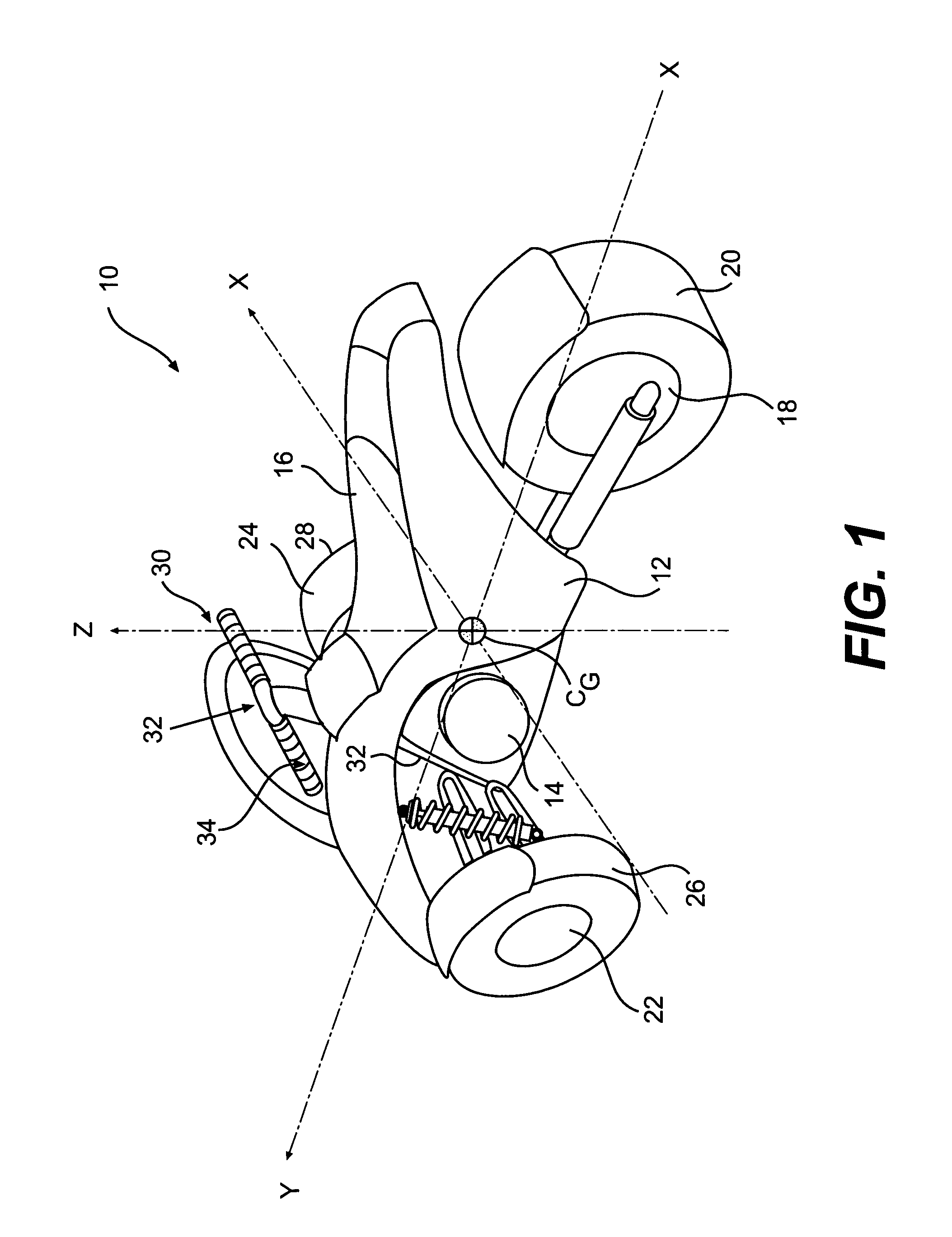Roll-related reactive system
a technology of reactive system and three-wheeled vehicle, which is applied in the direction of braking system, hand cart, cycle, etc., can solve the problems of less rider control, less stability of three-wheeled vehicle, and intrinsically less stable than four-wheeled vehicle, so as to reduce the amount of force transmitted
- Summary
- Abstract
- Description
- Claims
- Application Information
AI Technical Summary
Benefits of technology
Problems solved by technology
Method used
Image
Examples
Embodiment Construction
[0045]FIG. 1 illustrates a three-wheeled vehicle 10 in accordance with an embodiment of the invention. The particular design details of the three-wheeled vehicle 10 are not critical to this invention, and FIG. 1 merely illustrates one possible configuration. Vehicle 10 includes a frame 12 that supports an internal combustion engine 14, which could also be any type of power source including an electric motor or fuel cell, if desired. While the engine is shown at the front of the vehicle 10, those skilled in the art would readily recognize that the engine 14 may be located at any suitable position on the vehicle 10 without departing from the scope of the invention.
[0046]A seat 16 is mounted on the frame 12. Preferably, the seat 16 has a driver seat portion and may also include a passenger seat portion disposed behind the driver seat portion. As shown in FIG. 1, the seat 16 may be a straddle type seat. Alternatively, where the vehicle is a recumbent three-wheeled vehicle 10′, shown in ...
PUM
 Login to View More
Login to View More Abstract
Description
Claims
Application Information
 Login to View More
Login to View More - R&D
- Intellectual Property
- Life Sciences
- Materials
- Tech Scout
- Unparalleled Data Quality
- Higher Quality Content
- 60% Fewer Hallucinations
Browse by: Latest US Patents, China's latest patents, Technical Efficacy Thesaurus, Application Domain, Technology Topic, Popular Technical Reports.
© 2025 PatSnap. All rights reserved.Legal|Privacy policy|Modern Slavery Act Transparency Statement|Sitemap|About US| Contact US: help@patsnap.com



